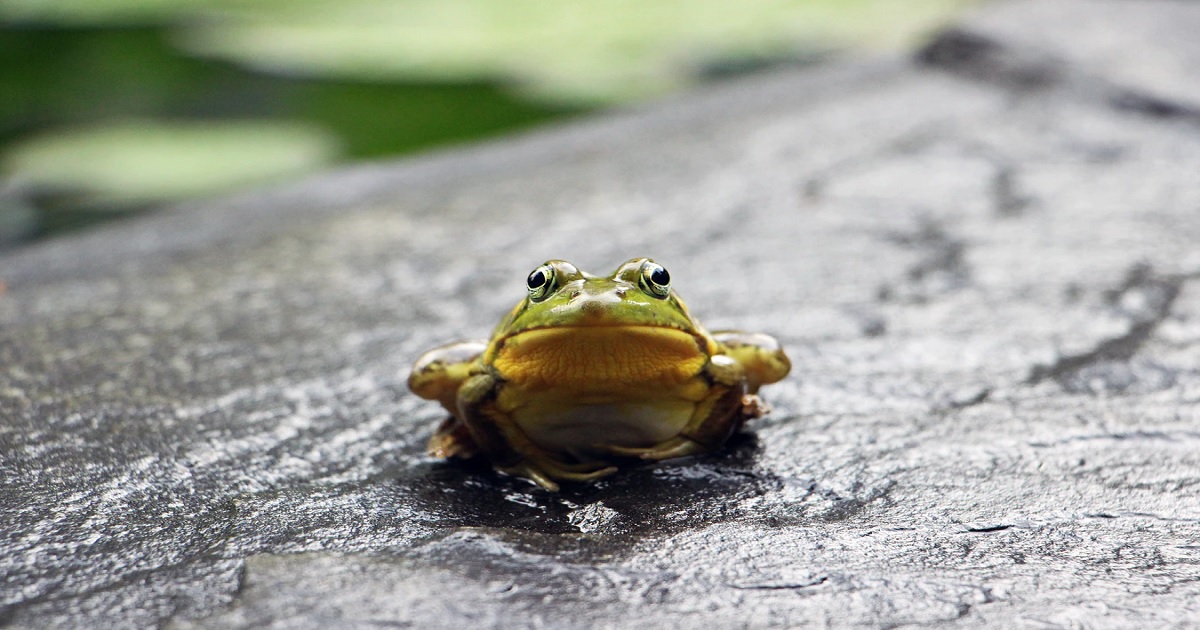A Pac man frog makes for an excellent beginner-friendly pet. As the only frogs with teeth, they are named after the 80’s classic arcade game character Pacman. During the day, they spend their time buried in the ground and eat about anything that moves. They do well in captivity, are easy to maintain, and can live up to 15 years with proper care.
This guide will take you through the different precautions to take while caring for a Pacman.
Pacman Housing
Enclosure
A baby Pacman can be kept in a small plastic reptile holder. You can house an adult Pacman in a 10-gallon tank of 20″ x10″ x12″ dimensions.
Substrate
A two to three-inch deep and damp substrate made up of moss, leaves, plants, ground coconut, or bark would be a good choice.
Temperature
Optimal temperatures during the day can range from 75°F to 85°F and during the night it falls to 65°F to 75°F. Use an under-tank heater as an overhead bulb can dry out a Pacman’s sensitive skin.
Humidity
These species of frogs enjoy 50% to 80% humidity in their habitat. You could manually spray the tank with freshwater or invest in an automated rainfall system.
Precautions to Take
- Pacman can get extremely territorial. They are prone to biting, and they will not hesitate to do so when they feel threatened.
- For this reason, you should house adult Pacman’s in different enclosures to avoid injury or death. If two Pacman’s are housed together, they can go as far as trying to each other.
- Keep an eye on the humidity of the enclosure. If it is low, your frog can develop respiratory issues, and if it is high, it can invite bacteria.
Pacman Diet
What to Feed?
You could feed your Pac man frog a healthy variety of crickets, earthworms, roaches, mealworms, small fish, and even mice.
You can keep a shallow bowl of water inside the tank for your Pacman to drink. They aren’t good swimmers. Avoid big containers with water at all costs.
When to Feed?
4 to 5 cricket or roaches can be fed as a part of their staple diet. As the frogs become older, you will notice a decrease in their appetite. You can then feed them mice or feeder fish every 2 to 3 days.
Precautions to Take
- Do not overfeed your frogs. A Pacman will overeat to compensate for the cold winter months, but overeating is not required as you will be feeding them throughout the year.
- Gut load insects, meaning feed them a diet rich in vitamins and minerals at least 24 hours before you feed them to your frog. This will ensure the Pacman receives the required nutrients to stay healthy.
Pacman Handling
A Pacman has sensitive skin, and they generally do not like to be handled. If your hands are unclean, or you have creams or perfume on you, their thin skin will quickly absorb these toxins. So touch and handle a Pacman only when necessary.
Precautions to Take
- Thoroughly clean your hands before you touch the frog or even when you clean their tank.
- A Pacman’s bite is strong and can cause serious injury. It would be advised you feed them with tongs for your safety.
- Supervise children around a Pacman as the frogs can get stressed and take to biting.
A Pacman frog is like a Panda of the amphibian world. The frogs will bury themselves in the ground with their head popping out during the day, their happy place. And at night, they will come out to stretch and explore their surroundings, but do not expect them to be pacing around. All in all, a Pacman is a great beginner-friendly pet you can cherish for years.
Bio: Ellen Hollington is a freelance writer who offers ghostwriting, copywriting, and blogging services. She works closely with B2C and B2B businesses providing digital marketing content that gains social media attention and increases their search engine visibility.


















